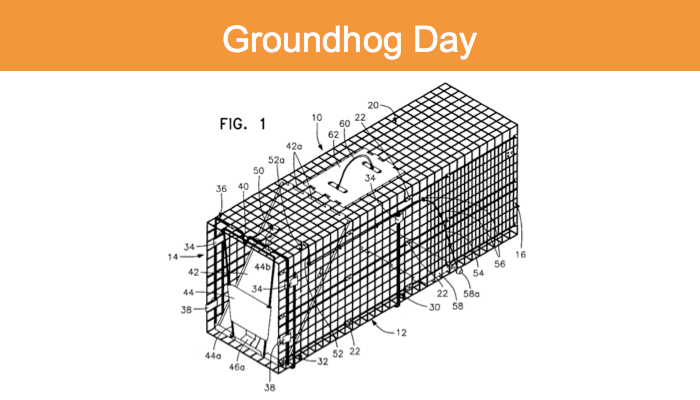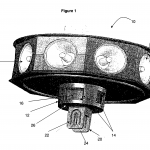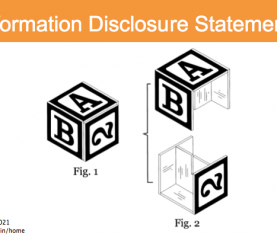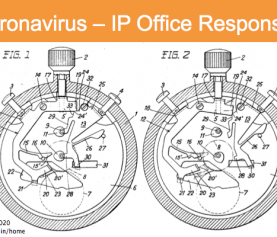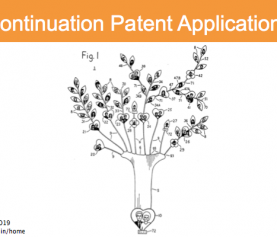Groundhog Day
Groundhog Day is a tradition celebrated mostly in the US and Canada, yearly on Feb. 2nd, in which if a groundhog sees its shadow, winter will persist, and if the groundhog doesn’t, then winter will end. Plainly, there’s not much correlation between what a groundhog sees or doesn’t see, and the weather. But this has been the subject of celebrations since at least the 1840s (Wikipedia: Groundhog Day), and the subject of Groundhog Day, an unusual and funny movie starring Bill Murray, Andie MacDowell, and at least one groundhog (whose name was Scooter, according to IMDB). Yet, none of the celebrations of Groundhog Day, or the movie, touch on a pressing question: what trademark registrations and patents are related to groundhogs?
Groundhog Day patents
Perhaps understandably, there do not appear to be any patents or patent applications related to Groundhog Day. This is not to say that there couldn’t be – just that no one has filed any. There are patents and applications related to groundhogs and woodchucks. Many of these relate to repellents, as people seek to keep the animals out of farms and gardens. Sure, they’re cute enough when you want them to predict that winter is over, but when they’re destroying your crops, they’re less adorable.
For instance, US Patent Application 20060174533, for an Animal Repellent System, described “deterrent means for effectuating a repellant component of [an] animal repellent system… thereby dissuading said animals from entering said particular area.” Exactly. Stay away from the tomatoes! Other approaches to dealing with these burrowing rodents include ones like the image featured at the top of this post. If you didn’t recognize it, an explanation is at the end.
Groundhog Day trademarks
While there are 86 US trademark registration application records relating to groundhogs or woodchucks, as of this writing, only 32 appear to be in effect. The other 54 are currently listed as “dead,” which likely means they were either abandoned while they were still applications – possibly because of a difficulty in registering them – or abandoned after registration – which can be a choice the owner makes for any of several reasons. You can read more about dead trademarks here, in my blog post.
Of those that are dead, most are the bare word “GROUNDHOG” or “WOODCHUCK.” One is a registration for the phrase “GUS THE SECOND MOST FAMOUS GROUNDHOG IN PENNSYLVANIA” which was applied for by the Pennsylvania Dept. of Revenue for “lottery related products” and “lottery services” (Serial number 85343356). While one can see why they’d like to capitalize on the fame of the most-famous groundhog (more on that in a moment) in Pennsylvania by registering a mark for the second-most famous one, unfortunately for the Penn. DOR, this phrase didn’t function as a mark, and they promptly abandoned the application.
Of the 32 trademark registrations that are active, there are registrations for “hand tools,” “battery chargers,” and many related to woodchucks for Woodchuck brand hard cider, including cider, glassware, taps, and more.
Groundhog Day non-trademarks
One thing that strikes me about the trademark registration applications is that there don’t appear to be any for either “Groundhog Day” or any related to Punxsutawney. With regard to the latter, the most famous groundhog in Pennsylvania (the one the DOR was coyly referring to) is Punxsutawney Phil. There are no trademark registration applications related to that phrase. Perhaps this is because no one has tried to commercialize that particular groundhog and the celebrations around him or her. Or perhaps it is because anyone would have a hard time registering that mark: it is geographically descriptive, and marks with a place name can face challenges on those grounds (see my blog post on geographic names in trademarks). It also identifies a famous animal (well, series of animals, even though people like to pretend that the Punxsutawney Phil is over 100 years old), and the USPTO might object to a trademark registration application on the grounds that it identifies a famous individual. That prohibition is supposed to apply to people, but in the case of the most famous Groundhog Day groundhog… who knows? Such a registration might also be objected to on the grounds that it is a generic or descriptive phrase, though if one tried to register it for selling avocados or accounting services, that might not be an issue.
For the phrase “Groundhog Day,” a registration may have trouble on the grounds that it is generic or descriptive – although, again, that may not be an issue if the goods or services are far enough removed from any celebration of Groundhog Day (read more on generic marks and how to prevent your mark from becoming generic, in my blog post on how to use a registered trademark). There is an abandoned registration for the phrase “GROUNDHOG JOB SHADOW DAY!” for a “mentoring program for school children” to shadow mentors in workplaces (Serial number 75618706). It was registered in 2000 and renewed in 2006, but not renewed in 2011, and therefore abandoned. It seems that no one has tried to use “Groundhog Day” to identify themselves as the source of goods or services, other than the example above. There is a registration for “Celebrate Woodchuck Day” related to the hard cider brand (Serial number 85263523). While woodchuck and groundhog are terms that refer to the same animals, this phrase may have had an easier time than an application for “Celebrate Groundhog Day” might have.
Do you have questions about Groundhog Day?
I’d be happy to field your questions on Groundhog Day, woodchucks, and how much longer winter will last. Call me at 617-340-9295 or email me at my Contact Me page. Or, find me on Facebook, Twitter, Google+, LinkedIn, Google Local, or Avvo. If you’re wondering about the image at the top of this post, it’s from US Patent 5862624, for “Cage Traps,” issued to the Woodstream Corporation, maker of Havahart live traps for animals (and of course, there are 14 trademark registrations or applications related to “Havahart”).


